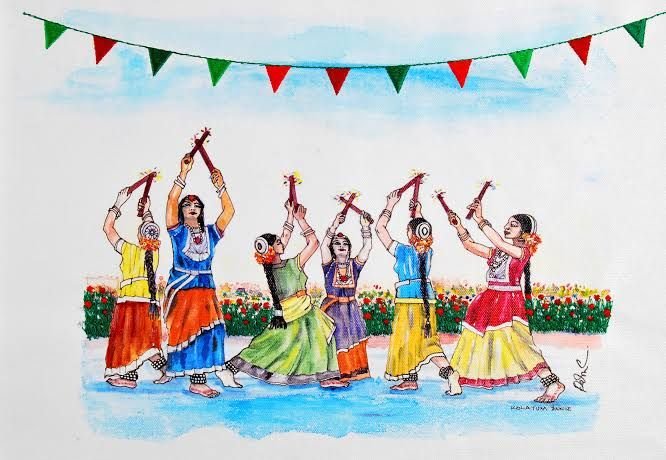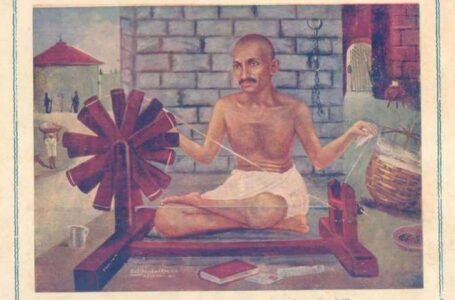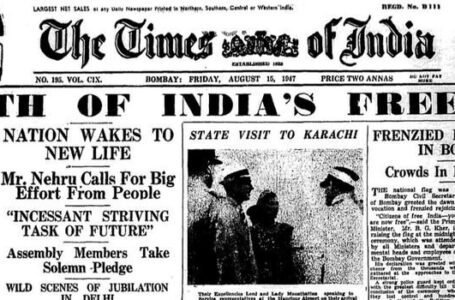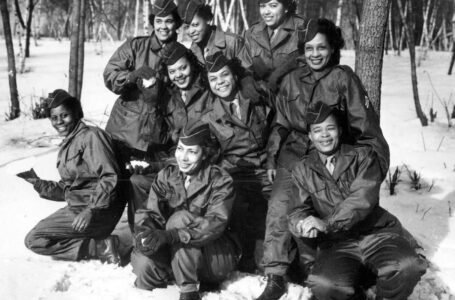Kolattam: A Celebration of Rhythm, Unity, and Tradition

Kolattam, a vibrant and rhythmic folk dance from South India, holds a special place in the cultural fabric of Andhra Pradesh and Tamil Nadu. Deriving its name from the Tamil words kol (stick) and attam (dance), Kolattam is a traditional art form that combines music, movement, and ritualistic devotion. Typically performed by women, this communal dance celebrates harmony, togetherness, and joy. Despite its deep cultural significance, Kolattam is gradually vanishing from rural festivities, raising concerns about the preservation of this ancient tradition.
This article delves into the origins, cultural significance, and challenges faced by Kolattam in contemporary times while exploring the efforts to revive and sustain this iconic dance form.
Origins and Historical Significance
Kolattam is believed to have originated centuries ago as a ritualistic dance dedicated to Hindu deities, particularly temple goddesses. Rooted in agrarian societies, it was traditionally performed during harvest festivals, temple celebrations, and community gatherings. The dance was both a form of worship and a communal activity, fostering a sense of unity and collective joy among participants.
The use of sticks in Kolattam is symbolic, representing agricultural tools and the rhythm of rural life. The beats created by the sticks mimic the sounds of nature, such as the rustling of crops or the tapping of rain, further connecting the dance to its agrarian roots.
Kolattam also holds a place in mythology. According to local legends, the dance was performed as an offering to appease deities and seek their blessings for prosperity and protection. This association with divine rituals has kept Kolattam intertwined with religious ceremonies, making it an integral part of temple festivities.
The Performance: Dance and Music in Perfect Harmony
Kolattam is a group dance, typically performed by women who form a circular or semi-circular formation. Each dancer holds two wooden sticks, often lacquered and brightly colored, which they use to create rhythmic beats. The dance involves intricate footwork, synchronized stick movements, and graceful body gestures, all set to the accompaniment of traditional folk songs and percussion instruments.
Dance Movements and Formations
The dancers stand in pairs, facing each other, and use their sticks to strike those of their partners in rhythmic patterns. These movements are often coordinated with other pairs in the circle, creating a mesmerizing interplay of sound and motion. In more elaborate versions, dancers form multiple circles or intertwine ribbons with their sticks to create visually stunning formations.
Variations such as pinnal kolattam introduce ropes or ribbons in place of sticks, adding an extra layer of complexity. Another variant, kummiattam, forgoes sticks altogether, with dancers clapping their hands to maintain rhythm.
Music and Songs
Music is an integral part of Kolattam. The dance is accompanied by traditional folk songs that narrate tales of devotion, rural life, or mythology. Instruments like the thavil (a drum), mridangam (a percussion instrument), and udukku (a hand drum) provide the rhythmic backdrop. The songs, often sung in a call-and-response style, encourage audience participation, further enhancing the communal atmosphere.
Cultural Significance of Kolattam
Kolattam transcends its role as a dance form, serving as a medium for cultural expression, social bonding, and spiritual devotion.
Celebrating Communal Harmony
Kolattam exemplifies the spirit of togetherness. The synchronized movements and interactions between dancers symbolize unity and mutual support, reinforcing the importance of community in rural life.
Preserving Folklore and Traditions
Through its songs and choreography, Kolattam preserves the oral traditions, myths, and legends of South India. It serves as a living archive of cultural heritage, passing down stories and values from one generation to the next.
A Medium of Worship
As a form of devotional expression, Kolattam is closely associated with temple rituals and religious festivals. It reflects the deep connection between art and spirituality in Indian culture, where dance and music are often seen as offerings to the divine.
Challenges Facing Kolattam Today
Despite its rich cultural significance, Kolattam is gradually fading from rural celebrations. Several factors contribute to its decline:
Urbanization and Modernization
As rural communities undergo rapid urbanization, traditional art forms like Kolattam are losing their relevance. Younger generations are increasingly drawn to contemporary forms of entertainment, leaving behind age-old practices.
Lack of Documentation and Support
Kolattam, like many folk arts, has largely been passed down orally. The lack of proper documentation and institutional support has made it vulnerable to neglect and distortion.
Decline in Rural Festivities
The diminishing importance of village fairs and harvest festivals has reduced the platforms available for Kolattam performances. With fewer opportunities to showcase their art, performers face difficulties sustaining their craft.
Gender Dynamics
Traditionally performed by women, Kolattam has seen limited participation from men, which has restricted its growth and adaptation. Efforts to make the dance more inclusive have been met with resistance in some communities, further complicating its revival.
Efforts to Revive Kolattam
Despite the challenges, there are ongoing efforts to preserve and promote Kolattam:
Cultural Festivals and Competitions
Events like school functions, cultural festivals, and state-sponsored competitions provide a platform for Kolattam performances. These initiatives not only showcase the dance to wider audiences but also encourage younger generations to learn and participate.
Workshops and Training Programs
Organizations and cultural institutions have started offering workshops to teach Kolattam to children and amateur dancers. These programs ensure that the knowledge and techniques of the dance are passed on to future generations.
Inclusion in Curricula
Including Kolattam in school curricula as part of physical education or cultural studies can help familiarize students with this traditional art form.
Digital Media
Social media and online platforms have played a significant role in bringing Kolattam to the attention of global audiences. Videos of performances and tutorials are helping to generate interest and appreciation for the dance among younger, tech-savvy individuals.
Conclusion: Keeping Kolattam Alive
In conclusion, Kolattam is more than just a folk dance; it is a celebration of cultural identity, community spirit, and artistic expression. As an ancient tradition that embodies the harmony and resilience of rural life, its preservation is vital for maintaining the cultural diversity of India.
By recognizing the value of Kolattam and supporting efforts to revive it, we can ensure that this beautiful dance form continues to thrive for generations to come. Whether through education, digital media, or cultural festivals, every step taken to safeguard Kolattam brings us closer to preserving the rich tapestry of South India’s cultural heritage.
Let Kolattam not just be a memory of the past but a vibrant part of our present and future. Through collective efforts, we can keep the rhythm of this traditional dance alive, echoing its beats of unity and joy for years to come.


